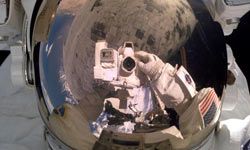We watch NASA astronauts in awe, day-dreaming of catapulting into space -- even if only for a moment of weightless existence. Most of us feel far removed from outer space, watching from the sidelines as the space agency shines a light on our mysterious universe. But we may not be as far removed as we think.
Since its inception in 1958, NASA's laundry list of accomplishments includes the first American in space in 1961, the first man to walk on the moon in 1969, a flight to Jupiter in 1972 and the installation of the International Space Station in 1998. (Read NASA's 10 Greatest Achievements to learn more.) Eight percent of all the world's inventions have come, in some form, from NASA research [source: NASA 360]. The organization's technology keeps the United States globally competitive in scientific research.
Advertisement
Much of the pioneering technology initially created for space travel finds new life in our homes. In fact, it may surprise you how many space-age technological advancements of the past now rest in your attic.
How has NASA affected the Dallas Cowboys? Find out on the next page.

